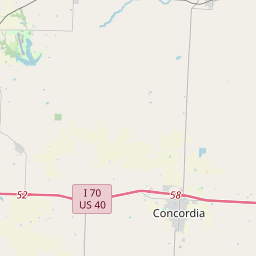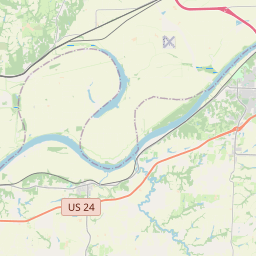Confederate Memorial State Historic Site
Historical marker location:
Higginsville, Missouri
( Marker is on 1st Street, 0.4 miles north of Business Missouri Route 13, on the left when traveling north.)













© OpenStreetMap contributors
The state of Missouri is home to several unique natural landmarks, including the Elephant Rocks State Park, which features giant granite boulders that resemble a herd of elephants, and the Ha Ha Tonka State Park, which has natural bridges, caves, and a castle ruin.
About Lafayette County
Lafayette County Timeline
Lafayette County, located in the state of Missouri, has a rich history that dates back to the early 1800s. The area was originally inhabited by Native American tribes, including the Osage and Missouria tribes. In 1820, the United States government signed the Treaty of 1820, which removed the Native American tribes from the area. Shortly after, settlers began to arrive, and the county was officially established on November 16, 1820.
The county was named after the Marquis de Lafayette, a French military officer and key figure in the American Revolutionary War. Lafayette County quickly grew in population, primarily due to the establishment of the Santa Fe Trail, which passed through the county from 1821 until the 1870s. The trail brought trade and commerce to the area, resulting in the growth of small towns and businesses along its route.
During the Civil War, Lafayette County became a significant battleground. The county was split between Confederate and Union sympathizers, leading to fierce conflicts. Several important battles took place within the county, most notably the Battle of Lexington in September 1861. The county saw occupation by both Confederate and Union forces at different points during the war, leaving a lasting impact on the local community.
After the Civil War, Lafayette County experienced a period of rebuilding and growth. The railroad arrived in the late 19th century, further enhancing the county's economic development. Today, Lafayette County continues to thrive, with a diverse economy that includes agriculture, manufacturing, and services. The county's historical significance is celebrated through the preservation of numerous historic sites and landmarks, ensuring that its rich history remains an integral part of its identity.
The county was named after the Marquis de Lafayette, a French military officer and key figure in the American Revolutionary War. Lafayette County quickly grew in population, primarily due to the establishment of the Santa Fe Trail, which passed through the county from 1821 until the 1870s. The trail brought trade and commerce to the area, resulting in the growth of small towns and businesses along its route.
During the Civil War, Lafayette County became a significant battleground. The county was split between Confederate and Union sympathizers, leading to fierce conflicts. Several important battles took place within the county, most notably the Battle of Lexington in September 1861. The county saw occupation by both Confederate and Union forces at different points during the war, leaving a lasting impact on the local community.
After the Civil War, Lafayette County experienced a period of rebuilding and growth. The railroad arrived in the late 19th century, further enhancing the county's economic development. Today, Lafayette County continues to thrive, with a diverse economy that includes agriculture, manufacturing, and services. The county's historical significance is celebrated through the preservation of numerous historic sites and landmarks, ensuring that its rich history remains an integral part of its identity.
Lafayette County Timeline
This timeline provides a glimpse into the major events and milestones that have shaped the history of Lafayette County, Missouri.
- 1820: Lafayette County established as one of the original counties of Missouri.
- 1827: Lexington, the county seat, founded.
- 1829: Pioneer George Caleb Leonard settles near present-day Odessa.
- 1831: A cholera epidemic sweeps through the county, causing many deaths.
- 1835: The county courthouse is constructed in Lexington.
- 1855: Waverly becomes the second county seat.
- 1861-1865: Lafayette County heavily impacted by the American Civil War.
- 1881: The Lee-Johnson feud, a political and personal conflict, results in multiple deaths.
- 1893: The Chicago & Alton Railroad is completed, boosting the local economy.
- 1927: The Kansas City Power and Light Plant in Lexington begins operation.
- 1961: The construction of Truman Reservoir is completed, providing recreational opportunities.
- 2003: The Confederate Memorial State Historic Site opens in Higginsville.
- 2010: Lafayette County's population reaches approximately 33,381.